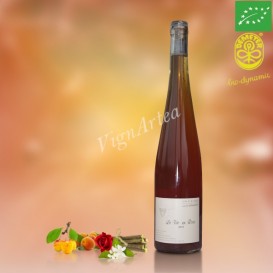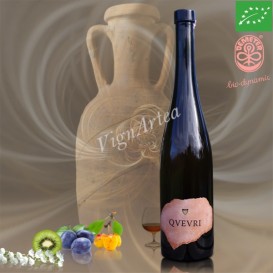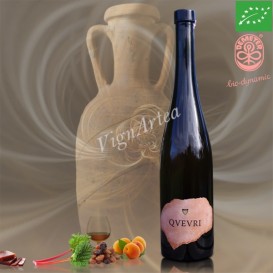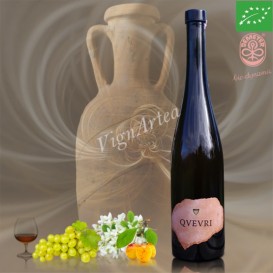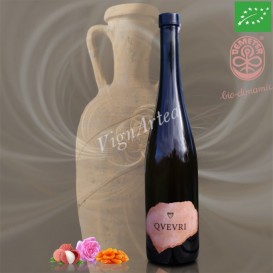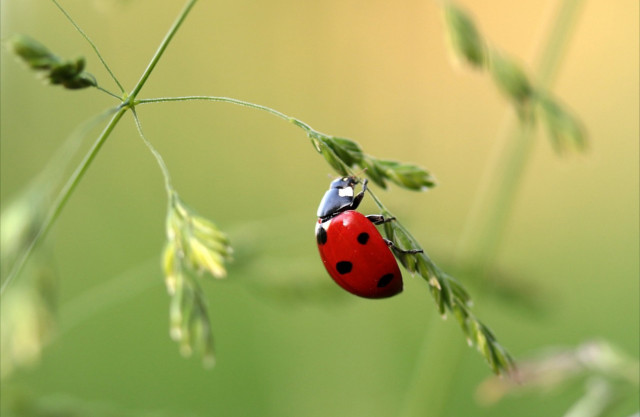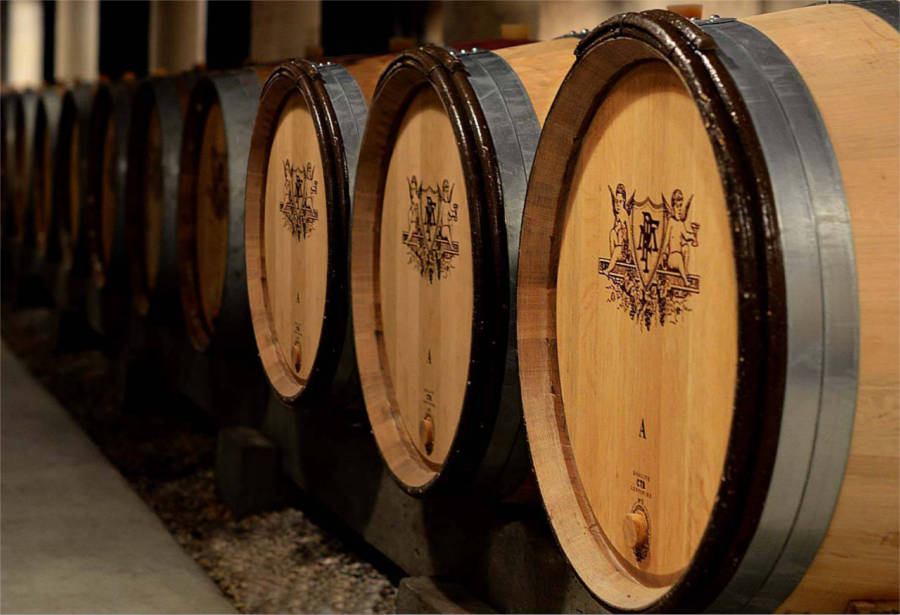Domaine Laurent BANNWARTH - Alsace

ALSACE 10 ha BIODYNAMIC WINEMAKER : Stéphane Bannwarth
The estate was created in 1950 by Laurent et Suzanne Bannwarth in Obermorschwihr, a small village located about ten kilometers from Colmar. Joined in 1987 by their son Stéphane and their daughter Régine, they continue to run their 10 hectares vineyard on a soil they continue to operate their 10 hectare vineyard with a respect for the environment and the living world as it is rarely found elsewhere. They are also the only French winemakers to produce white wines vinified in Qvevris...
The estate was created in 1950 by Laurent et Suzanne Bannwarth in Obermorschwihr, a small village located about ten kilometers from Colmar. Joined in 1987 by their son Stéphane and their daughter Régine, they continue to run their 10 hectares vineyard on a soil they continue to operate their 10 hectare vineyard with a respect for the environment and the living world as it is rarely found elsewhere. They are also the only French winemakers to produce white wines vinified in Qvevris.
Since 2004, the estate is certified in organic farming and applies the principles of Biodynamics in its vineyard : a special care is given to the vines by use of natural products or herbal teas, the soil is preserved by limiting the use of tractors, and fertilization is made through composting.
In 2007, Stéphane went on a trip to Georgia to discover the ancestral winemaking methods that are still used today in this country. The use of Georgian clay amphorae, called "Qvevris", subjugated him and in 2010, he decides to this method in France and ordered six qvevris from Georgia. For him, it is the culmination of an approach started in 2004 during his conversion into biodynamic culture.
He has currently eight jars with a capacity ranging from 200 to 1500 liters, and vinifies about 10% of its annual harvest. What makes those jars unique in its eyes is their ability to bring micro-oxygenation to wines such as do the oak barrels, but without having the disadvantages of the aromas brought by the wood.
THE TERROIR
The 10 hectares of the estate vineyard are on two types of soil : the first soil consists of a very thick layer of clay-sandstone marl, sandstone limestone, conglomerates and pebbles, whose formation took place at the end of the Eocene (-33 and -37 million years), when the subsidence of the Hercynian massif center gave birth to the Rhinegraben. The area was at that time an emerged land covered by lakes and lagoons left after the seas withdrawal at the end of the Jurassic. The second soil consists of Loess, a light, porous yellow silt that settled in the region 2 million years ago, during the last Quaternary glaciations.
The locality of Bildstoeckle, made up of a soil dating from the Eocene, is an excellent terroir, due to its southern exposure : it gives birth to the greatest estate wines.
WINEMAKING
Stéphane Bannwarth devotes 10% of his harvest to the production of Qvevri wines, another part is intended for the production of wines made without any inputs nor sulphits addition, identified as "natural" wines.
The rest of the grapes are vinified more traditionally, using casks with a light sulphits addition.
The making of Qvevris wines is certainly the most natural and interventionist winemaking method that we know. The fact that no inputs, manipulation, filtration, racking and clarification are applied for those wines requires a prefect grapes health : a single defective grape is enough to destroy the whole Qvevri content.
During the harvest, the grapes are tasted : if the maturity degree and the balance between acidity and sugar are reached, the latter will be vinified in Qvevris. After a severe sorting to keep only the berries with no skin alteration, the grapes are put in a one meter high pocket and slipped inside the buried Qvevri. The glass lid is sealed, and what remains to do is to wait : the indigenous yeasts spontaneously start the alcoholic fermentation, then the lactic acid bacteria take over and trigger the malolactic fermentation.
The skin maceration lasts between 4 to 8 months, depending on the grape variety. The bag containing the skins is then extracted from the Qvevris and the juice continues to age for a few extra months. The wine is then racked and bottled without any filtration, fining or sulphits addition.
The advantage of such a winemaking method is that no half-measure is possible : either the fermentation took place normally until the end, and the wine is definitely stabilized and protected, either the fermentation did not go well and the acetic souring is immediate, destroying the entire contents.
Qvevri wines do not meet the traditional wines tasting standard. To appreciate them, you have to leave aside everything you know, and, to use Stéphane's words, " you have to taste them and let them tell you their story. We then open up to another dimension, to the very wine essence, to its mystical dimension. " .
The Bannwarth domain allows us to take a long journey through time and space, allowing us to discover wines as they were made by our ancestors, to enrich the aromatic range of the wines we are used to drinking.
-
LA VIE EN ROSE 2016 MACERATION WINE (Domaine Laurent BANNWARTH)
24,90 € OUT OF STOCK!OUT OF STOCK!ALSACE - AOP ALSACE - Orange Wine
Skin maceration / Native yeasts / No added sulphits
Floral Elegant Thirst-quenching
Very fresh nose, with notes of apricots, mirabelle plums, rose and orange flowers. The palate is elegant and delicately scented, its long finish stretches on a hint of liquorice. A refined and very refreshing orange wine, a success !
(Tasting date : May 2020)
-
AUXERROIS Qvevri 2012 (Domaine Laurent Bannwarth)
32,90 € In stock!ALSACE - AOP ALSACE - Orange Wines
Fermentation in Qvevri
The juice is clear, of a beautiful orange color. There is a slight reduction present on the nose which disappears after a few minutes of aeration in the glass, to give way to elegant notes of kiwi, mirabelle plum, quetsche and a hint of lily of the valley. On the palate, the juice is supple and delicious with a slightly peaty finish evoking whiskey.
A wine of finesse and delicacy, a nice surprise !
(Tasting date : April 2020)
-
PINOT GRIS Qvevri 2014 (Domaine Laurent Bannwarth)
37,00 € In stock!ALSACE - AOP ALSACE - Orange Wines
Made in Qvevris / No added sulphits
The juice is salmon-colored, and the nose, intense and totally atypical, evokes the armagnac : there are scents of ripe apricots, rhubarb, raisins, and quince paste. The mouth is supple, invigorating and very pleasantly scented, the tannins are barely noticeable. A beautiful curiosity !
(Tasting date : April 2020)
-
SYLVANER Qvevri 2014 (Domaine L. Bannwarth)
35,00 € In stock!ALSACE - AOP ALSACE - Orange Wines
Made in Qvevris
Juicy nose with aromas of fresh grapes, white flowers, mirabelle plum, and plum brandy. The palate is very delicate, it offers a nice acidity and elegant lemony notes.
-
GEWÜRZTRAMINER Qvevri 2016 (Domaine Bannwarth)
36,00 € In stock!ALSACE - AOP ALSACE - Orange Wine
Qvevri maceration / No added sulphits
Generous and floral nose, with scents of rose, lychees and dried apricots. The palate is lively and elegantly scented. A very fresh and very floral vintage !
(Tasting date : April 2020)

